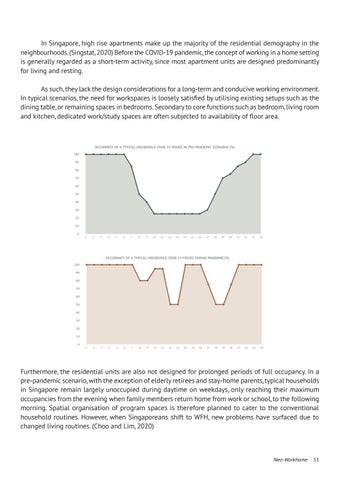In Singapore, high rise apartments make up the majority of the residential demography in the neighbourhoods. (Singstat, 2020) Before the COVID-19 pandemic, the concept of working in a home setting is generally regarded as a short-term activity, since most apartment units are designed predominantly for living and resting. As such, they lack the design considerations for a long-term and conducive working environment. In typical scenarios, the need for workspaces is loosely satisfied by utilising existing setups such as the dining table, or remaining spaces in bedrooms. Secondary to core functions such as bedroom, living room and kitchen, dedicated work/study spaces are often subjected to availability of floor area.
Furthermore, the residential units are also not designed for prolonged periods of full occupancy. In a pre-pandemic scenario, with the exception of elderly retirees and stay-home parents, typical households in Singapore remain largely unoccupied during daytime on weekdays, only reaching their maximum occupancies from the evening when family members return home from work or school, to the following morning. Spatial organisation of program spaces is therefore planned to cater to the conventional household routines. However, when Singaporeans shift to WFH, new problems have surfaced due to changed living routines. (Choo and Lim, 2020)
Neo-Workhome
11





